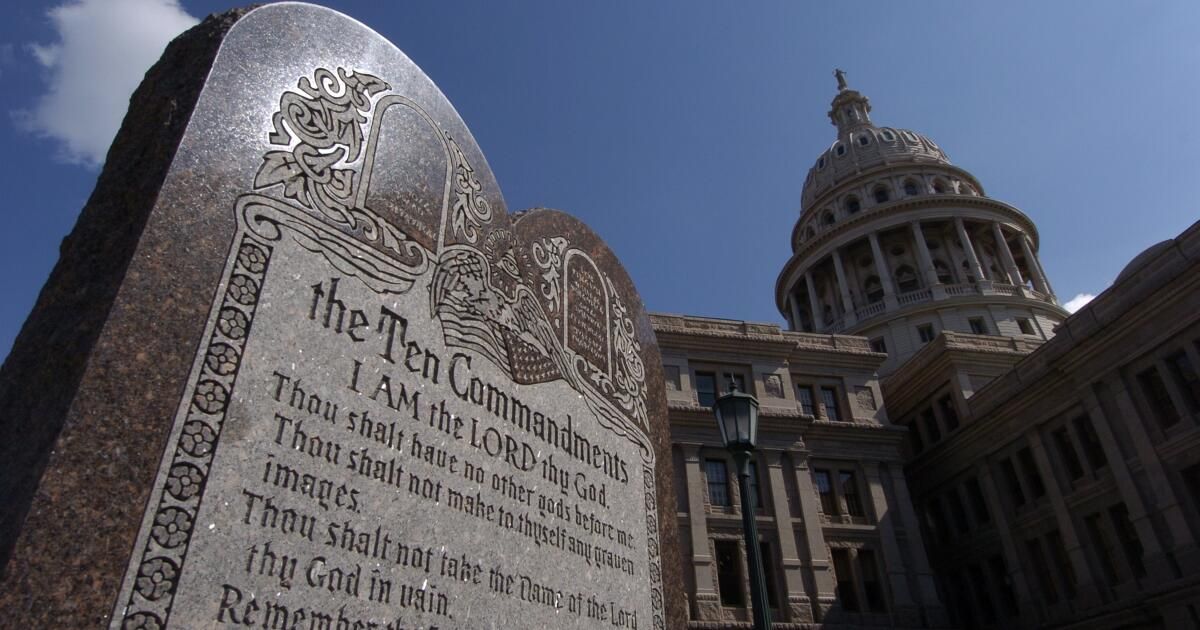The first amendment, and the separation of the Church and the State, the best idea of the United States, is at risk as never before.
The notion that the Church and the State should be discreet entities were not preceded when the founders decided to embark on what a historian has called the “animated experiment” of dismissal. The founders were very aware of the wars of religion and English revolution, conflicts to a large extent about religious differences.
In addition, while the founders surveyed religious diversity in the colonies, from Puritans and Bautistas in New England to Quaqueros, Jews, Dutch and Presbyterian renovated Protestants in the middle colonies even more Bautistas in the south and Anglicans, Catholics and even Muslims at all times, they realized that designating any faith or nenomination as the US religion would be contentious.
Then the founders chose the path that did not travel. The first amendment, written by James Madison and ratified in 1791, said that “Congress will not make any law respecting the establishment of religion” while guaranteeing free exercise for all. Another way of understanding this unique configuration is economic. As Adam Smith predicted in its 1776 report for free market capitalism, “the richness of nations”, religion will prosper if the government refuses to intervene or favor one faith over the other.
American history has more than the prediction of vindicated Smith. Religion has flourished in the United States as anywhere else precisely because the government has remained outside the religion business.
But the corollary is also true. Religious factionalism has not prevented government functions. In other words, the first amendment has worked significantly well.
As Thomas Jefferson pointed out in 1808: “We have resolved, for fair experiment, the great and interesting question if freedom of religion is compatible with order in government and obedience to laws[.] & We have experienced the tranquility and comfort that results from leaving everyone to freely and openly profess those principles of religion that are the inductions of their own reason, and the serious convictions of their own research. “
Others also noticed. “Half of Europe's wars, half of the internal problems that have bothered European states,” said James Bryce, a historian of the University of Oxford, observed in 1893, “have emerged from the theological differences or from the rival statements of the Church and the State. This vast chapter of debate and struggle has remained practically unopened in the United States.”
The United States has survived numerous attempts to get rid of the first amendment. During the Civil War, an organization called National Reform Assn. We seek to amend the Constitution with a revised preamble: “We, the people of the United States, humbly recognize the Almighty God as the source of all authority and power in the civil government, the Lord Jesus Christ as the ruler between the nations, his will revealed as the supreme law of the earth, to constitute a Christian government, and to form a more perfect union …”.
The group brought its proposal to the White House, where Abraham Lincoln timed wisely, and affirms that “the work of amending the Constitution should not be done hurriedly.”
Other attempts include those proposed by the Christian amendment association, which emerged during the Cold War. The members of the Congress did not approve that amendment, but added “under God” to the promise of loyalty in 1954 and replaced E Pluribus unum (“Of many, one”) with “a under God” as the national motto in 1956.
The most recent attempts to eviscerate the separation wall between the Church and the State have not focused so much on constitutional amendments as on incremental attacks through legislation, with the collusion of the Judiciary. The publication of the ten commandments in public classrooms in Louisiana and Texas and, more importantly, the use of taxpayers' money for religious education represents clear violations of the establishment clause of the amendment of the first amendment.
Since the nineteenth century, the use of public money for religious education was a brilliant line that separated the Church and the State. The so -called Blaine amendments, named by James Blaine, president of the House of Representatives, Senator, Secretary of State and Republican candidate for President in 1884, were adopted by 37 states. The amendments originated in the anti -Catholic fervor, but their prohibition of public support for religious schools was constitutionally axiomatic for almost a century.
That seems picturesque now, as the red states rush to distribute coupons financed by taxpayers so that parents can send their children to religious schools at public expense. Unfortunately, Donald Trump's “great bill” Provides tax credit funds For religious education, and the majority in the Supreme Court is an accomplice of efforts to undermine the separation of the Church and the State.
If only the Supreme Court had half of deference for the 1st amendment that for the second amendment, we would be in a better way.
As Judge Sandra Day O'Connor wrote In his last opinion of the Supreme Court on Affairs of the Church-State, “those who would renegotiate the boundaries between the Church and the State, therefore, must answer a difficult question: why would we change a system that has served us so well for someone who has served so bad to others?”
Randall Balmer, one of the expert witnesses in the case of Alabama Ten commanders, teaches in Dartmouth College. His latest book, “America's Best Idea: The Separation of Church and State”, will be released on August 5.












